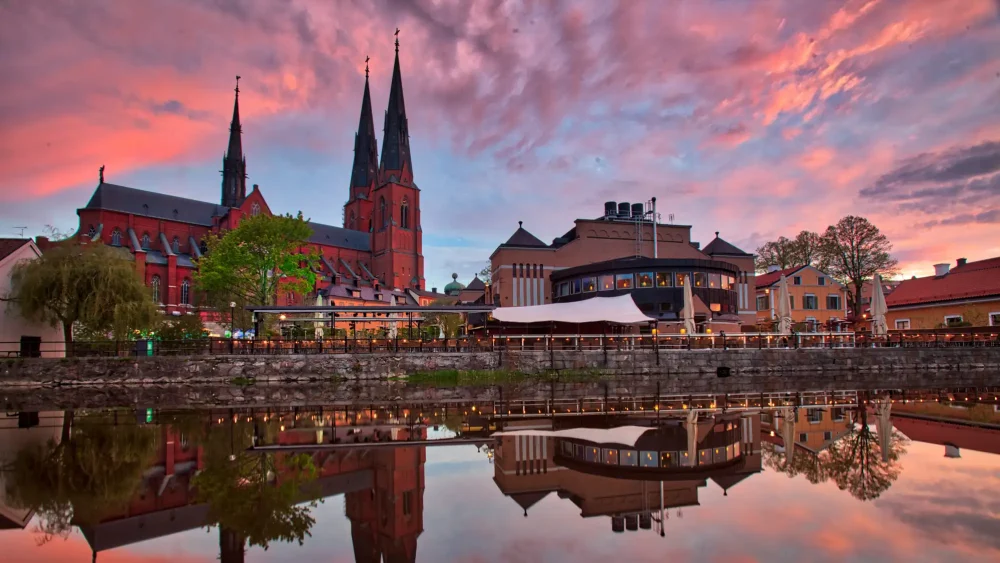In the early 1100s, Sweden became a Christian nation. In 1164, Uppsala was made the seat of the archbishop, becoming the country’s spiritual centre for about a century. In the mid-1200s, a devastating fire destroyed much of the town and its cathedral. Combined with the land uplift that made Fyrisån increasingly difficult to navigate, this led to the relocation of the archbishop’s seat to Östra Aros—five kilometres south.
In 1286, the new Uppsala was founded. The old site became known as Gamla Uppsala, while Östra Aros took the name Uppsala. A new cathedral was built and consecrated in 1435.
The new city soon became not only an important centre of trade but also of education when Uppsala University, the oldest university in the Nordic region, was founded in 1477. World-famous scholars such as Carl Linnaeus, Anders Celsius, and Olof Rudbeck the Elder worked and taught here.
Characteristic of Uppsala are its straight, grid-patterned streets. In the 17th century, it became fashionable to rebuild cities in an orderly layout rather than the winding medieval style. Many old buildings were demolished, new streets were laid out, and Stora torget (the Main Square) was created—unique for its closed corners. It was the first square of its kind in Sweden, where streets cross in the centre while buildings meet at the corners instead of following the square’s sides.
A City of New Ideas
Today, Uppsala is a modern city that still retains its small-town charm. It’s home to two universities, the seat of the Archbishop of the Church of Sweden, a vibrant cultural scene, and beautiful natural surroundings. The city is also well known for its pioneering research and innovation.

